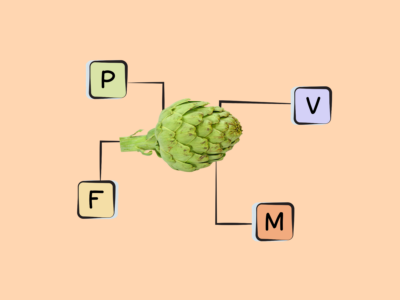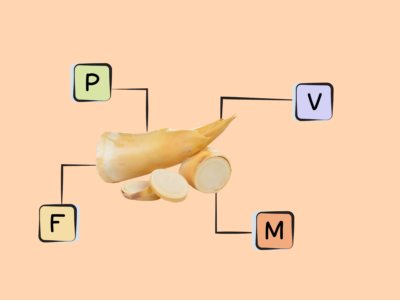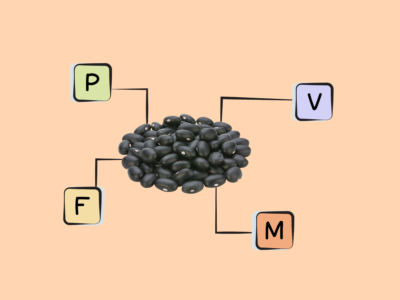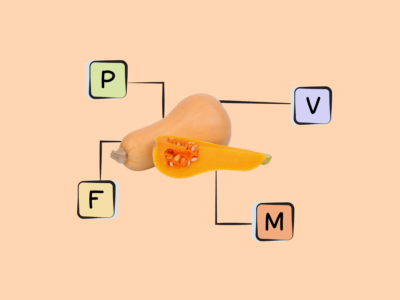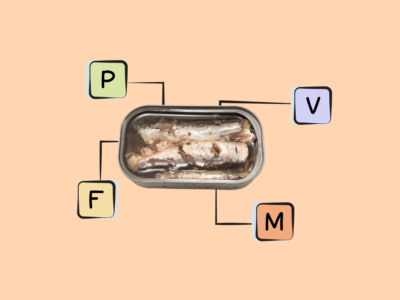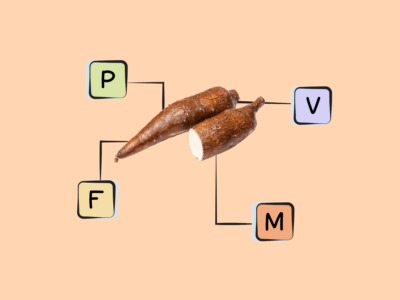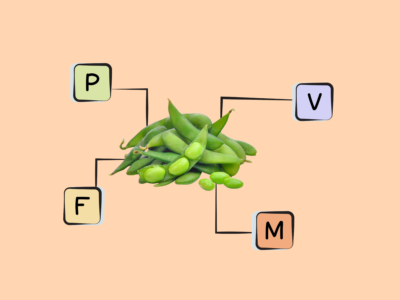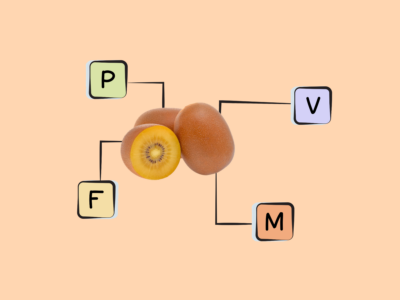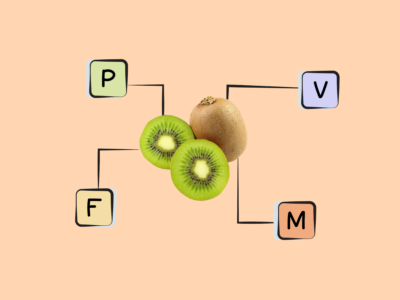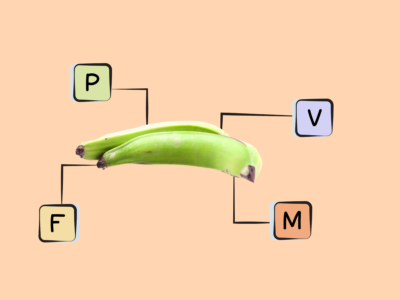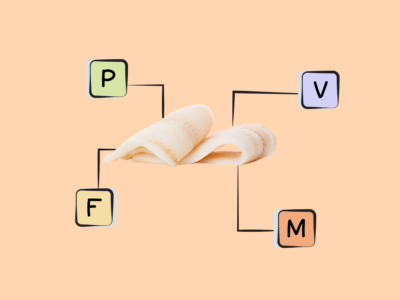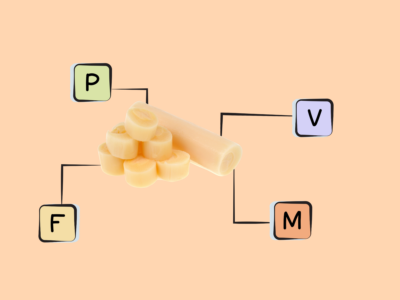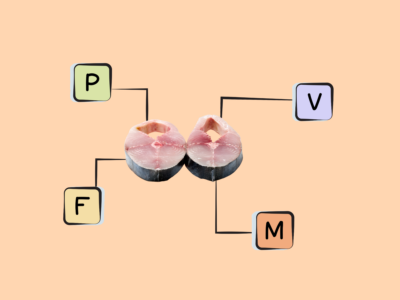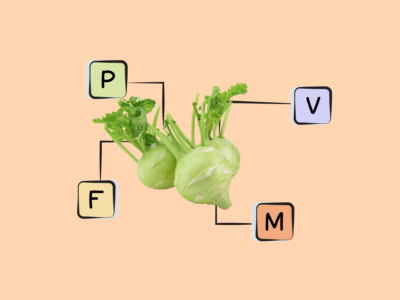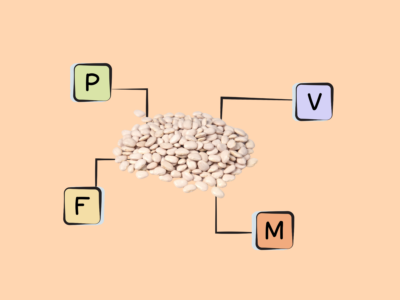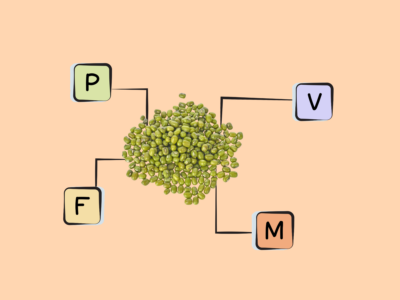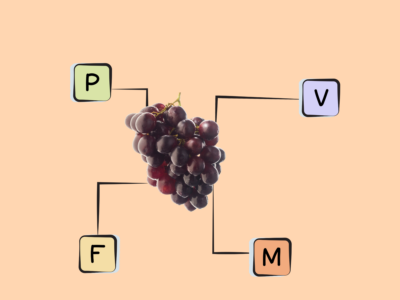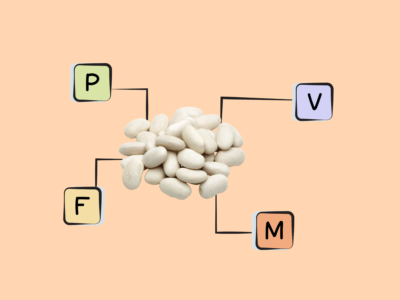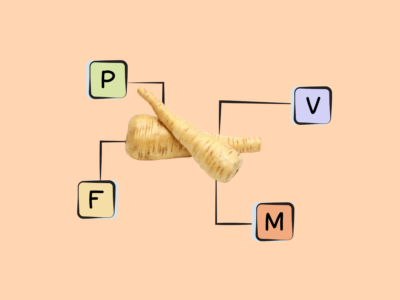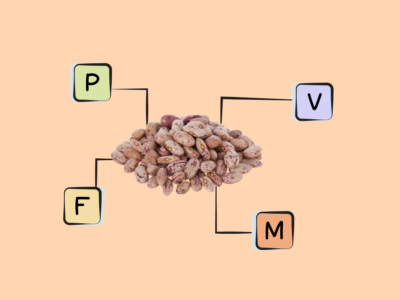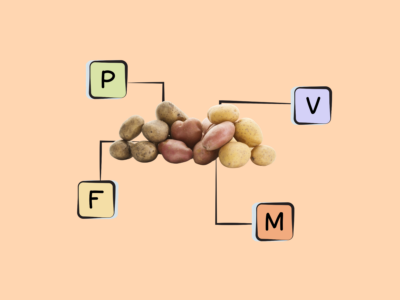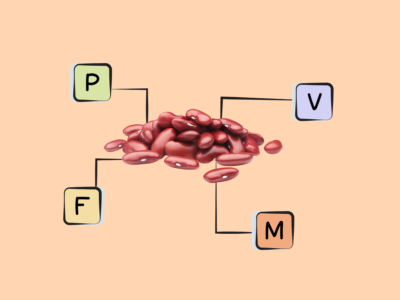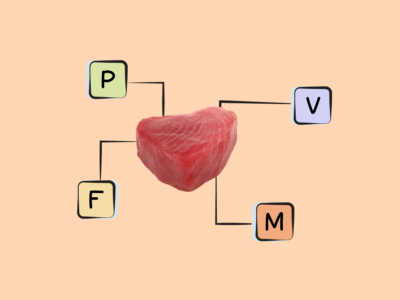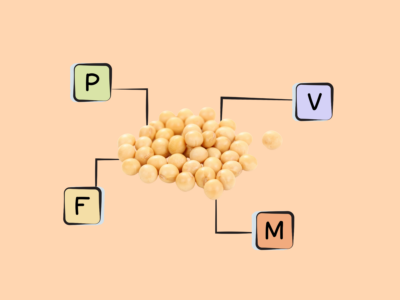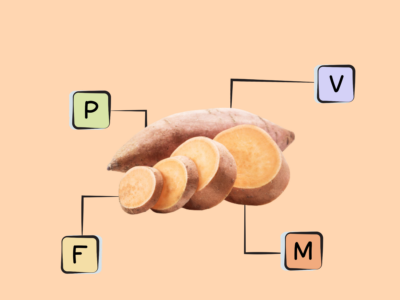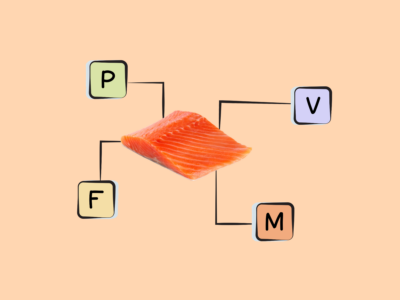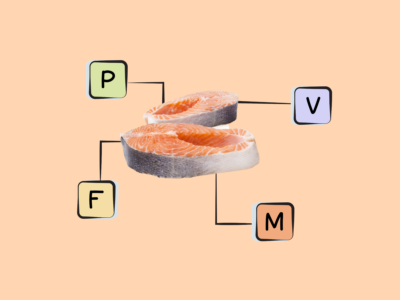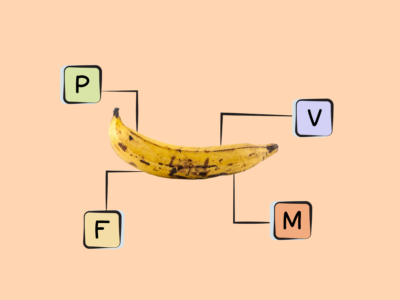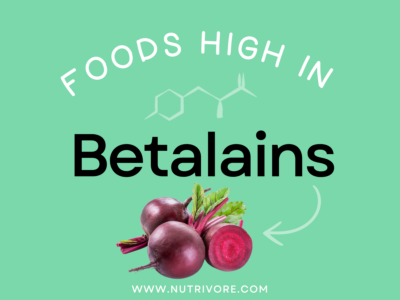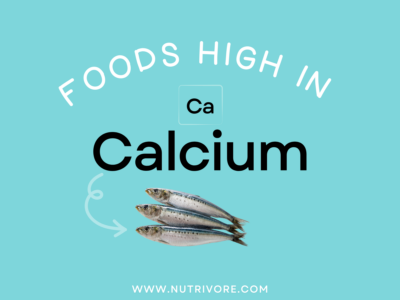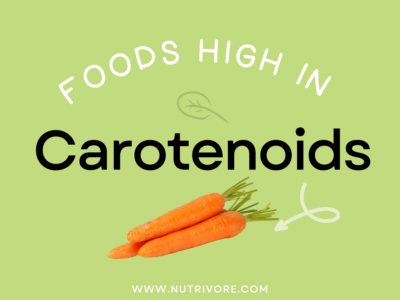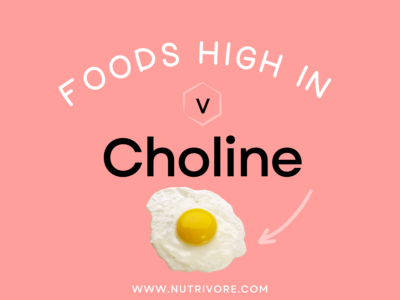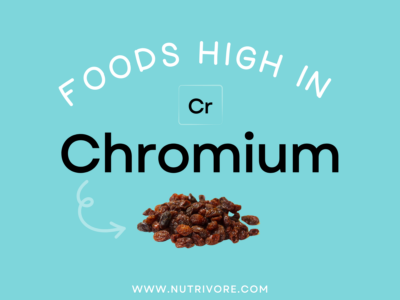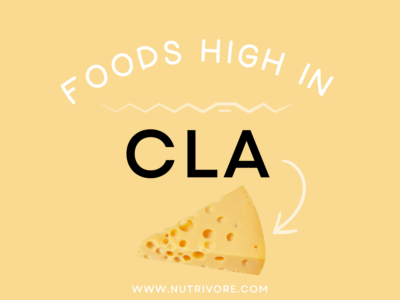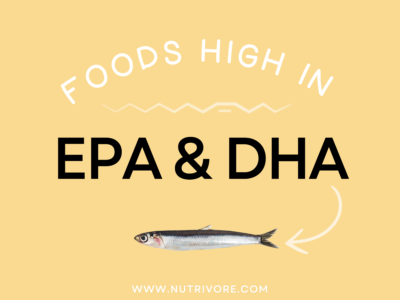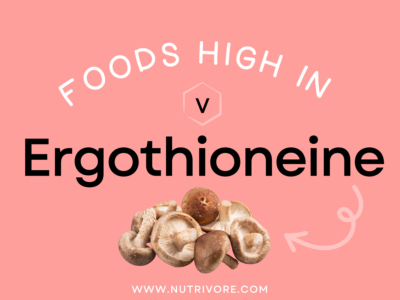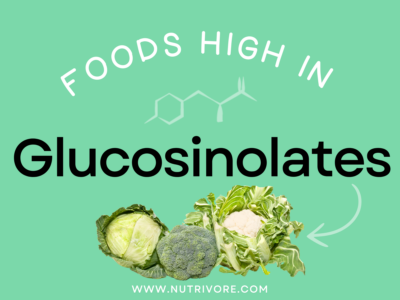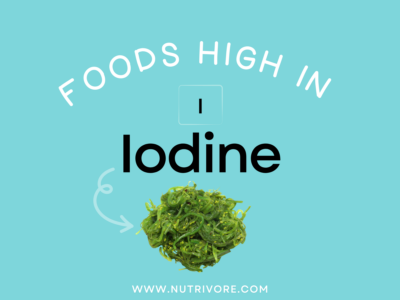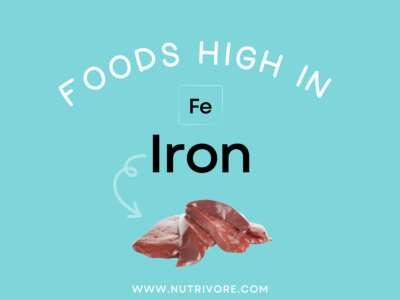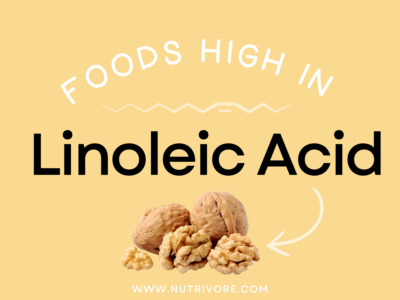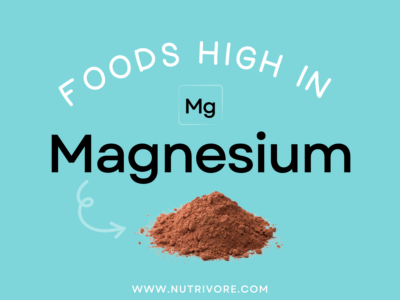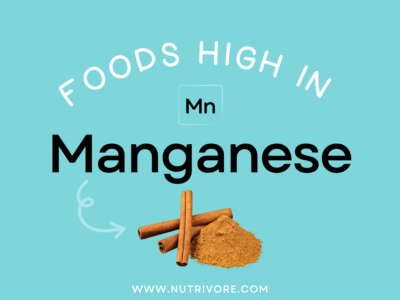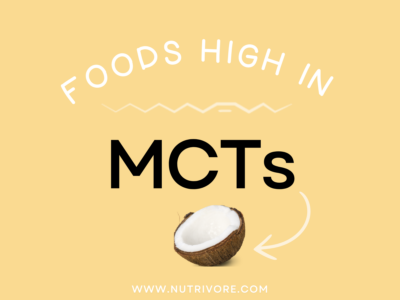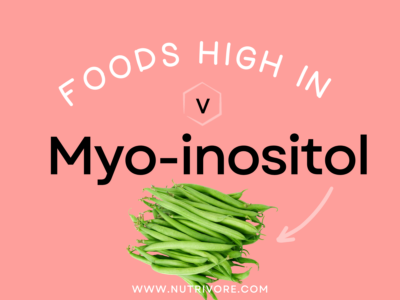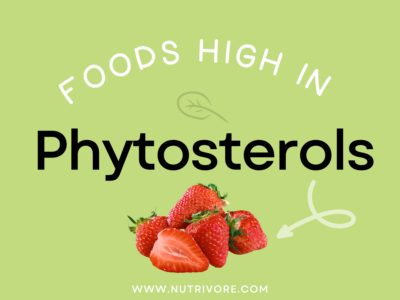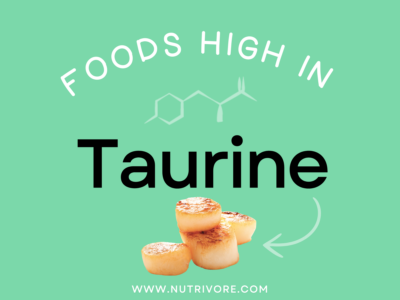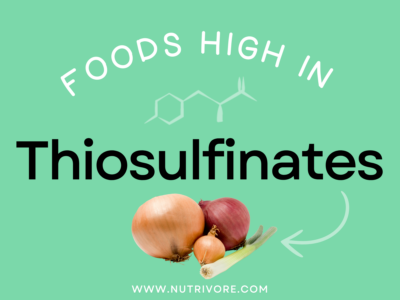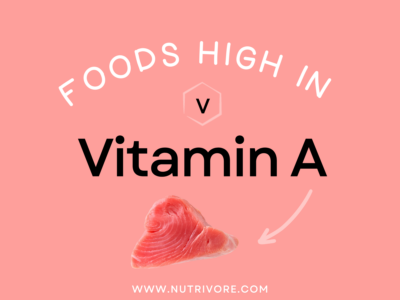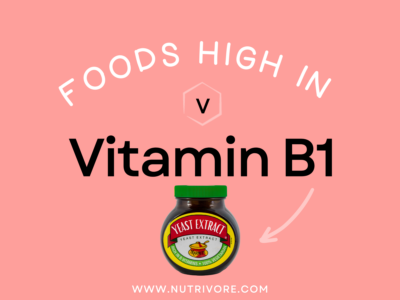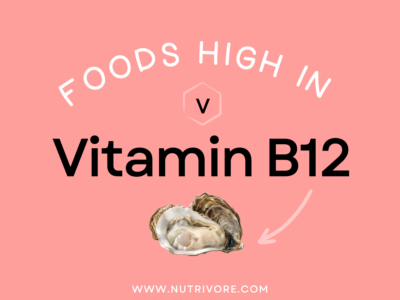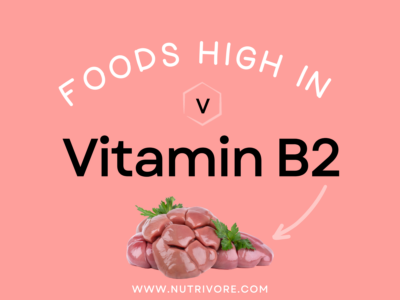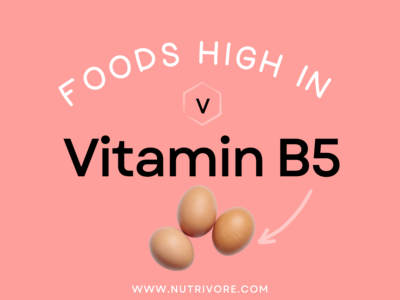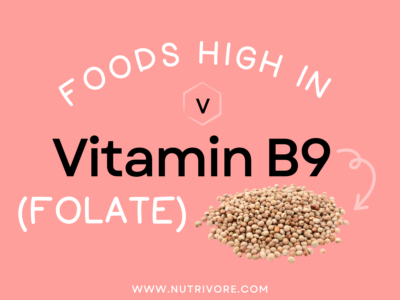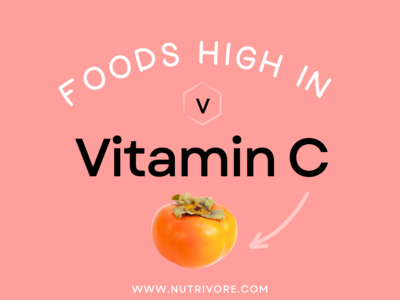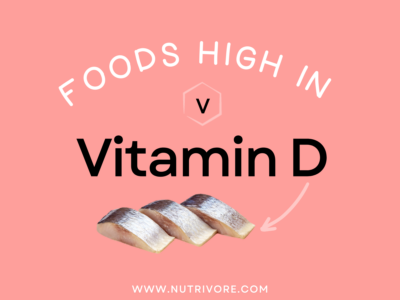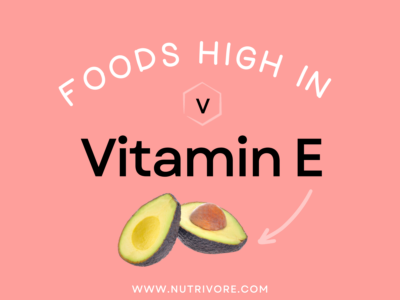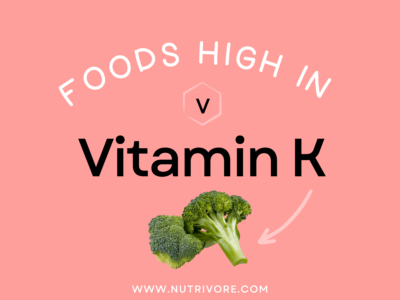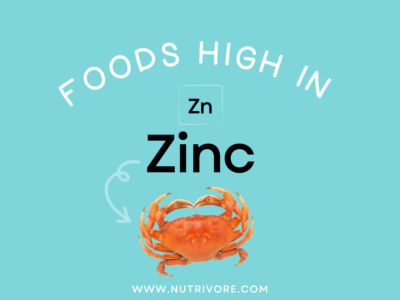Table of Contents[Hide][Show]
Top 5 Common Food Sources of Potassium
Looking to get more mg of potassium in your diet? Look no further! My team and I have crunched the numbers and did all the math to determine the top 5 common food sources of potassium, per serving. (Spoiler alert – bananas didn’t even make the top 25!) Overall, there aren’t any commonly available foods that provide half of the daily value of potassium per serving, so it’s important to choose a variety of potassium rich foods that deliver smaller amounts, like 10 or 20% of the daily value per serving, and and sprinkle those throughout the day. Getting enough potassium from our diet through healthy eating is important since a large collection of studies show that getting nutrients from dietary supplements doesn’t improve health outcomes compared to getting nutrients from foods!
| Rank | Food | Nutrivore Score | Serving Size (Raw) | Potassium (mg/serving) | % Daily Value |
|---|---|---|---|---|---|
| 1 | Soybeans, Mature Seeds | 326 | 1/2 cup | 1671.2 | 36 |
| 2 | Pigeon Peas (Red Gram), Mature Seeds | 211 | 1/2 cup | 1426.8 | 30 |
| 3 | Yams | 167 | 1 cup, cubes | 1224.0 | 26 |
| 4 | Raisins, Average1 | 104 | 1/2 cup | 1080.3 | 23 |
| 5 | Tomatoes, Sun-Dried | 655 | 1/2 cup | 925.3 | 20 |
Want to know more about this important mineral including what potassium does in the body, how much potassium we need, what happens if we have low potassium levels or if we get too much, and even more awesome food sources of potassium? Keep reading to learn all there is to know!
Learn What Foods Are the Best Sources of Every Nutrient

The Top 25 Foods for Every Nutrient
The Top 25 Foods for Every Nutrient e-book is a well-organized, easy-to-use, grocery store-friendly guide to help you choose foods that fit your needs of 43 important nutrients while creating a balanced nutrient-dense diet.
Get two “Top 25” food lists for each nutrient, plus you’ll find RDA charts for everyone, informative visuals, fun facts, serving sizes and the 58 foods that are Nutrient Super Stars!
Buy now for instant digital access.
What Is Potassium and What Does It Do?
Potassium is an essential mineral that every living cell needs to function. It serves as an electrolyte, helping regulate the body’s pH and fluid balance. It also has a specific role with sodium in creating membrane potential—AKA the difference in electric potential between the inside and outside of cells, which ultimately allows for the control of muscle contraction, heart function, gastrointestinal motility, and the transmission of nerve impulses. Additionally, potassium acts as a cofactor for some important enzymes, such as pyruvate kinase, and plays a role in glucose metabolism and hormone secretion.
Potassium has a well-established ability to reduce blood pressure, which may explain its protective effect against stroke. Some research also suggests potassium could help prevent vascular calcification, kidney stones, and bone loss—though for the latter, the evidence is mostly experimental. Importantly, potassium’s dietary ratio with sodium plays a big role in disease risk, with low intakes relative to sodium apparently increasing the risk of kidney disease, stroke, and osteoporosis.
Learn more about potassium here.
Potassium Deficiency
A 2011 study evaluated American’s usual nutrient intake including nutrients that are naturally-occurring in foods, from fortified and enriched foods, and from supplements. The results indicated that an astounding 97.8% of American adults usual diet falls short of the Adequate Intake (AI) for potassium intake, which makes it the most common nutrient shortfall.
Groups At Risk
Those at high risk of potassium deficiency (hypokalemia) include:
- Individuals with prolonged diarrhea or vomiting,
- Individuals using diuretics,
- Individuals who overuse laxatives,
- Individuals experiencing excessive sweating or urination,
- Individuals with metabolic disturbances,
- Those with kidney disease,
- People with hyperaldosteronism (high levels of aldosterone), and
- Individuals taking certain medications, including some antibiotics (penicillins and certain tetracyclines), the anti-cancer agent cisplatin, aminoglycosides (such as amikacin, gentamicin, tobramycin, kanamycin, and streptomycin), sodium phosphates, mineralocorticoids (such as cortisone, prednisone, hydrocortisone, and fludrocortisone), beta-adrenergic agonists (such as albuterol, bitolterol, or metaproterenol), and some anti-fungal agents.
Learn more here.
Symptoms of Deficiency
Symptoms of potassium deficiency include muscle weakness, cramps, fatigue, and intestinal paralysis, which can cause constipation, bloating, and abdominal pain. Long term potassium insufficiency may increase the risk of high blood pressure, stroke, kidney stones, and potentially osteoporosis.
Learn more here.
Problems From Too Much Potassium
Potassium toxicity, or hyperkalemia, can occur if the kidneys can’t eliminate excess potassium. Symptoms of hyperkalemia include muscle weakness, tingling in the hands and feet, temporary paralysis, and severe heart health issues such as abnormal heart rhythm and cardiac arrest. Though rare in healthy individuals, hyperkalemia is more likely in people with kidney failure, hypoaldosteronism, severe tissue damage, or hemolysis. Combining potassium supplements with certain medications, such as ACE inhibitors, beta-blockers, NSAIDs, or potassium-sparing diuretics, also raises the risk. High-dose potassium supplements (over 18 g) may trigger severe hyperkalemia even in those with normal kidney function. Additionally, potassium supplements and potassium-based salt substitutes can cause gastrointestinal side effects, including nausea, vomiting, and abdominal discomfort. For most people, getting potassium from fruits and vegetables is safer and avoids these risks.
Learn more here.
How Much Potassium Do We Need?
The following table summarizes the current recommended amounts of potassium, based on age, gender, or situation. However, higher intakes from whole foods, especially in the context of higher-sodium diets, may be beneficial!
| 0 – 6 months | |||||
| 6 months to < 12 months | |||||
| 1 yr – 3 yrs | |||||
| 4 yrs – 8 yrs | |||||
| 9 yrs – 13 yrs | |||||
| 14 yrs – 18 yrs | |||||
| 19 yrs – 50 yrs | |||||
| 51+ yrs | |||||
| Pregnant (14 – 18 yrs) | |||||
| Pregnant (19 – 30 yrs) | |||||
| Pregnant (31 – 50 yrs) | |||||
| Lactating (14 – 18 yrs) | |||||
| Lactating (19 – 30 yrs) | |||||
| Lactating (31 – 50 yrs) |
Nutrient Daily Values
Nutrition requirements and recommended nutrient intake for infants, children, adolescents, adults, mature adults, and pregnant and lactating individuals.
More High-Potassium Foods
Other foods that are good sources of potassium that didn’t make the top 5 include leafy green vegetables, cruciferous vegetables, melons (such as cantaloupe), bananas, apricots, plums, prunes, oranges (and orange juice), tomato juice, potatoes, sweet potatoes, squash, avocados, mushrooms, and legumes (especially lentils, kidney beans, white beans, black beans and soybeans). Many nuts and seeds also have a high potassium content, including pistachios, almonds, hazelnuts, Brazil nuts, and even acorns! And, dairy products—particularly low-fat dairy like milk and yogurt—have a relatively high concentration of potassium.
Good Food Sources of Potassium
The following foods are good sources of potassium, containing at least 10% of the daily value of this awesome mineral per serving. Popular foods just missing the 10% cut-off, coming in at 9% include beets, pomegranate, and winter squash to name a few.
Top 5 Common Food Sources
If you’re looking for top 5 common food sources of other important nutrients check out these posts!
cITATIONS
Expand to see all scientific references for this article.
Aburto NJ, Hanson S, Gutierrez H, Hooper L, Elliott P, Cappuccio FP. Effect of increased potassium intake on cardiovascular risk factors and disease: systematic review and meta-analyses. BMJ. 2013 Apr 3;346:f1378. doi: 10.1136/bmj.f1378.
Chen YY, Chen YJ. Association between Dietary Calcium and Potassium and Diabetic Retinopathy: A Cross-Sectional Retrospective Study. Nutrients. 2022 Mar 4;14(5):1086. doi: 10.3390/nu14051086.
Dawson-Hughes B, Harris SS, Palermo NJ, Gilhooly CH, Shea MK, Fielding RA, Ceglia L. Potassium Bicarbonate Supplementation Lowers Bone Turnover and Calcium Excretion in Older Men and Women: A Randomized Dose-Finding Trial. J Bone Miner Res. 2015 Nov;30(11):2103-11. doi: 10.1002/jbmr.2554.
Ferraro PM, Mandel EI, Curhan GC, Gambaro G, Taylor EN. Dietary Protein and Potassium, Diet-Dependent Net Acid Load, and Risk of Incident Kidney Stones. Clin J Am Soc Nephrol. 2016 Oct 7;11(10):1834-1844. doi: 10.2215/CJN.01520216.
Filippini T, Violi F, D’Amico R, Vinceti M. The effect of potassium supplementation on blood pressure in hypertensive subjects: A systematic review and meta-analysis. Int J Cardiol. 2017 Mar 1;230:127-135. doi: 10.1016/j.ijcard.2016.12.048.
Filippou CD, Tsioufis CP, Thomopoulos CG, Mihas CC, Dimitriadis KS, Sotiropoulou LI, Chrysochoou CA, Nihoyannopoulos PI, Tousoulis DM. Dietary Approaches to Stop Hypertension (DASH) Diet and Blood Pressure Reduction in Adults with and without Hypertension: A Systematic Review and Meta-Analysis of Randomized Controlled Trials. Adv Nutr. 2020 Sep 1;11(5):1150-1160. doi: 10.1093/advances/nmaa041.
Fulgoni VL 3rd, Keast DR, Bailey RL, Dwyer J. Foods, fortificants, and supplements: Where do Americans get their nutrients? J Nutr. 2011 Oct;141(10):1847-54. doi: 10.3945/jn.111.142257. Epub 2011 Aug 24. PMID: 21865568; PMCID: PMC3174857.
Hayhoe RP, Lentjes MA, Luben RN, Khaw KT, Welch AA. Dietary magnesium and potassium intakes and circulating magnesium are associated with heel bone ultrasound attenuation and osteoporotic fracture risk in the EPIC-Norfolk cohort study. Am J Clin Nutr. 2015 Aug;102(2):376-84. doi: 10.3945/ajcn.114.102723.
Kong SH, Kim JH, Hong AR, Lee JH, Kim SW, Shin CS. Dietary potassium intake is beneficial to bone health in a low calcium intake population: the Korean National Health and Nutrition Examination Survey (KNHANES) (2008-2011). Osteoporos Int. 2017 May;28(5):1577-1585. doi: 10.1007/s00198-017-3908-4.
Lambert H, Frassetto L, Moore JB, Torgerson D, Gannon R, Burckhardt P, Lanham-New S. The effect of supplementation with alkaline potassium salts on bone metabolism: a meta-analysis. Osteoporos Int. 2015 Apr;26(4):1311-8. doi: 10.1007/s00198-014-3006-9.
Lemann J Jr, Pleuss JA, Gray RW. Potassium causes calcium retention in healthy adults. J Nutr. 1993 Sep;123(9):1623-6. doi: 10.1093/jn/123.9.1623.
Mandal AK. Hypokalemia and hyperkalemia. Med Clin North Am. 1997 May;81(3):611-39. doi: 10.1016/s0025-7125(05)70536-8.
Morris RC Jr, Schmidlin O, Tanaka M, Forman A, Frassetto L, Sebastian A. Differing effects of supplemental KCl and KHCO3: pathophysiological and clinical implications. Semin Nephrol. 1999 Sep;19(5):487-93.
Mumoli N, Cei M. Licorice-induced hypokalemia. Int J Cardiol. 2008 Mar 14;124(3):e42-4. doi: 10.1016/j.ijcard.2006.11.190.
Potassium: Fact Sheet for Health Professionals. National Institutes of Health (NIH) Office of Dietary Supplements. 2022 Jun 22.
Sebastian A, Harris ST, Ottaway JH, Todd KM, Morris RC Jr. Improved mineral balance and skeletal metabolism in postmenopausal women treated with potassium bicarbonate. N Engl J Med. 1994 Jun 23;330(25):1776-81. doi: 10.1056/NEJM199406233302502.
Vinceti M, Filippini T, Crippa A, de Sesmaisons A, Wise LA, Orsini N. Meta-Analysis of Potassium Intake and the Risk of Stroke. J Am Heart Assoc. 2016 Oct 6;5(10):e004210. doi: 10.1161/JAHA.116.004210.
Weaver CM. Potassium and health. Adv Nutr. 2013 May 1;4(3):368S-77S. doi: 10.3945/an.112.003533.



